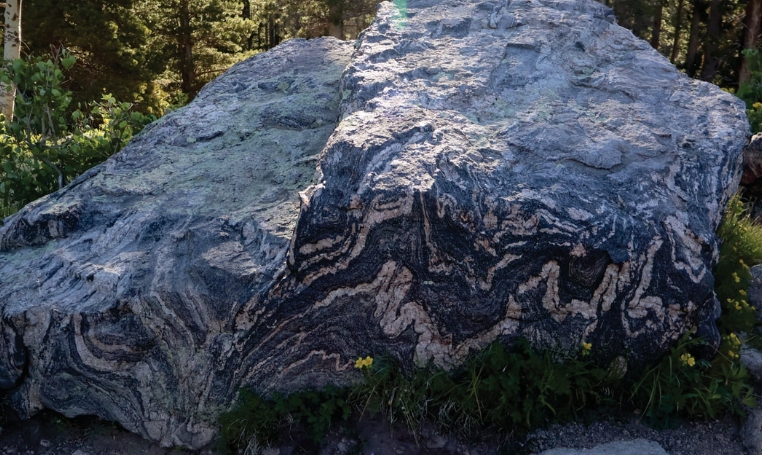Gneiss is a common type of metamorphic rock that forms from the alteration of pre-existing rocks through intense heat and pressure. It is characterized by its distinct banding and foliation, which gives it a striped appearance. Throughout the world, gneiss can be found in a variety of different types, each with its own unique composition and characteristics.
1. Orthogneiss
One of the most common types of gneiss is orthogneiss, which forms from the metamorphism of igneous rocks such as granite or diorite. This type of gneiss typically has a coarse-grained texture and is composed of minerals such as quartz, feldspar, and mica. Orthogneiss is often found in mountain ranges and other areas where continental plates have collided and undergone intense tectonic forces.
2. Paragneiss
Paragneiss is another type of gneiss that forms from the metamorphism of sedimentary rocks such as shale, sandstone, or limestone. This type of gneiss often has a finer-grained texture and is characterized by the presence of minerals such as quartz, garnet, and biotite. Paragneiss is commonly found in regions where ancient oceanic sediments have been subjected to high temperatures and pressures deep within the Earth’s crust.
3. Migmatite
Migmatite is a unique type of gneiss that forms from the partial melting of pre-existing rocks. This process can create a mixture of igneous and metamorphic minerals, resulting in a banded appearance that is distinct from other types of gneiss. Migmatite is commonly found in areas of intense tectonic activity, such as along convergent plate boundaries or within mountain ranges.
4. Augen Gneiss
Augen gneiss is a type of gneiss that is characterized by the presence of large, eye-shaped minerals known as “augen.” These distinctive features are typically formed from minerals such as feldspar or quartz, which have been stretched and flattened during the metamorphic process. Augen gneiss is often found in regions where continental collisions have occurred, creating intense pressures that deform the rock and create these unique structures.
In conclusion, gneiss is a diverse and fascinating type of rock that can be found in a wide range of environments around the world. From orthogneiss to paragneiss, migmatite to augen gneiss, each type of gneiss offers a glimpse into the complex and dynamic processes that shape the Earth’s crust. By exploring the different types of gneiss found across the globe, geologists can gain valuable insights into the geological history of our planet and the forces that continue to shape it today.

